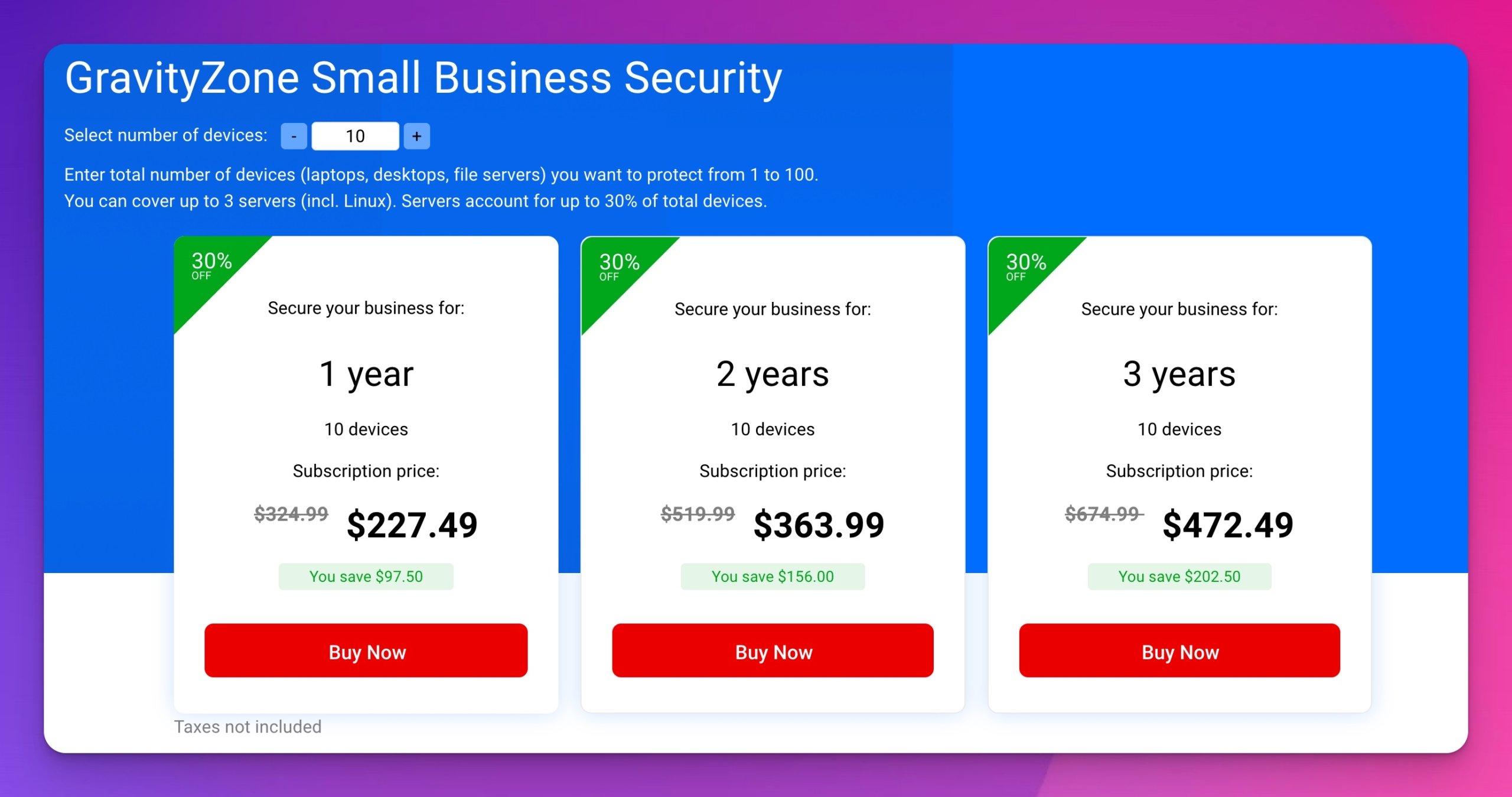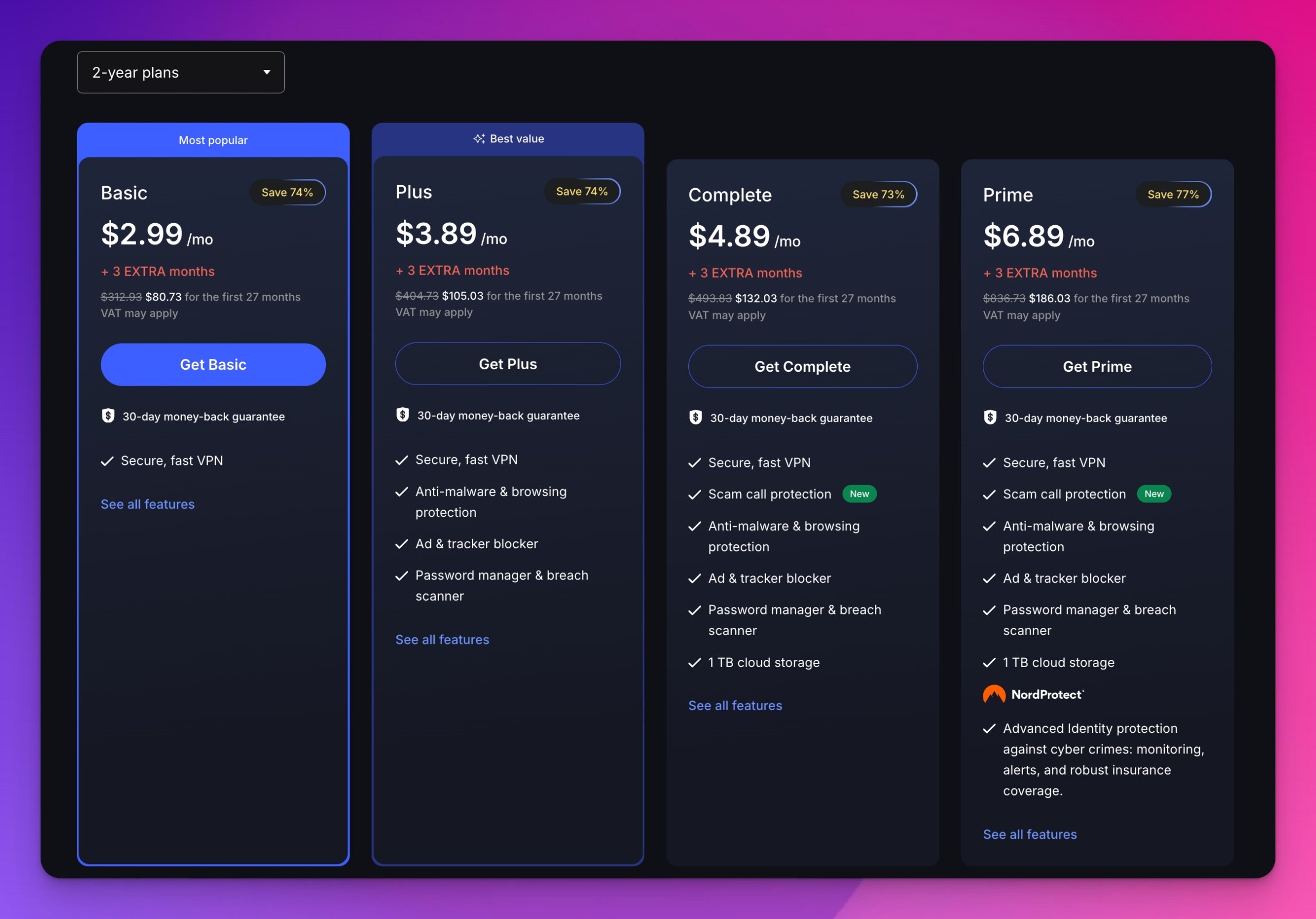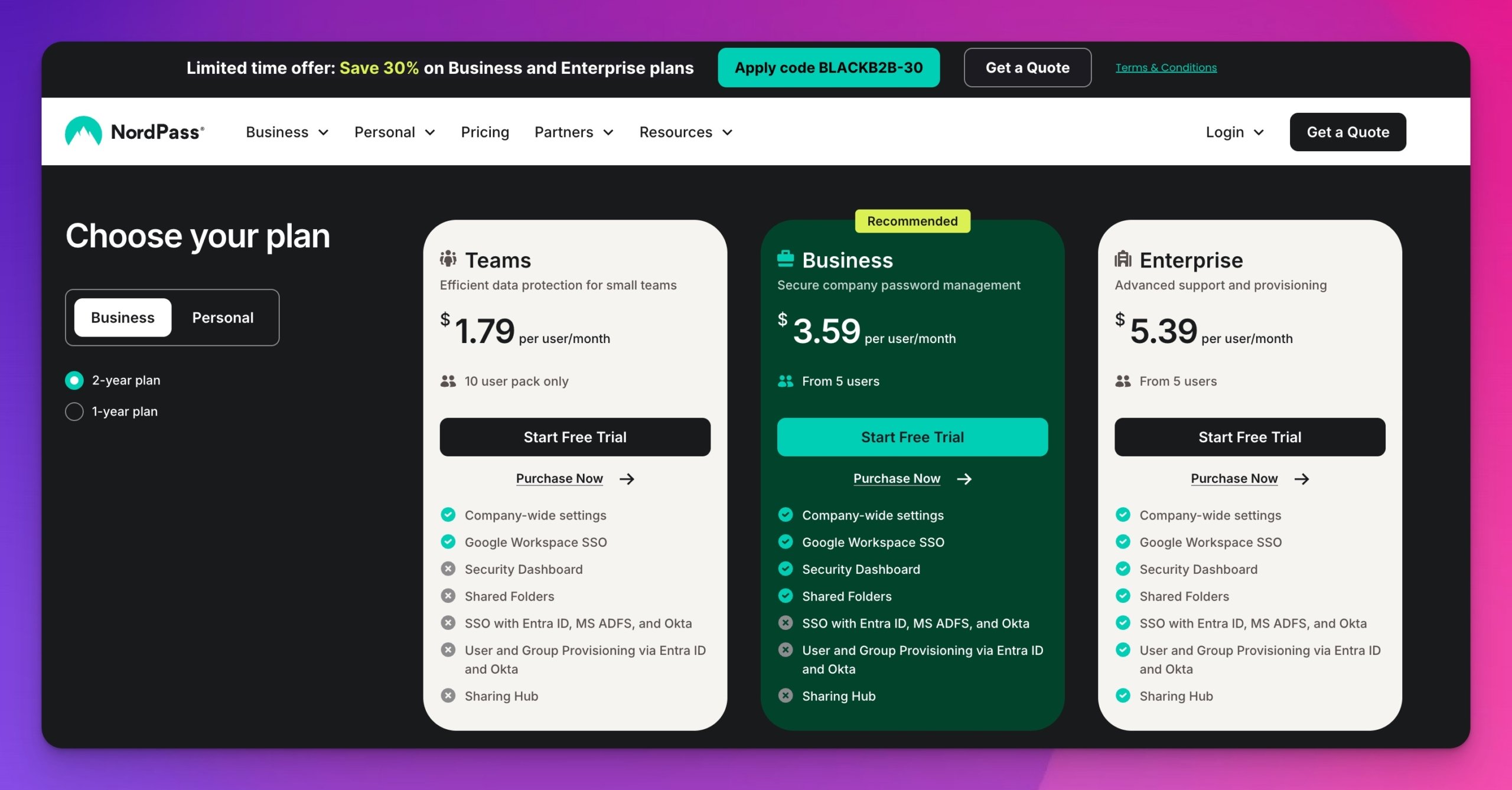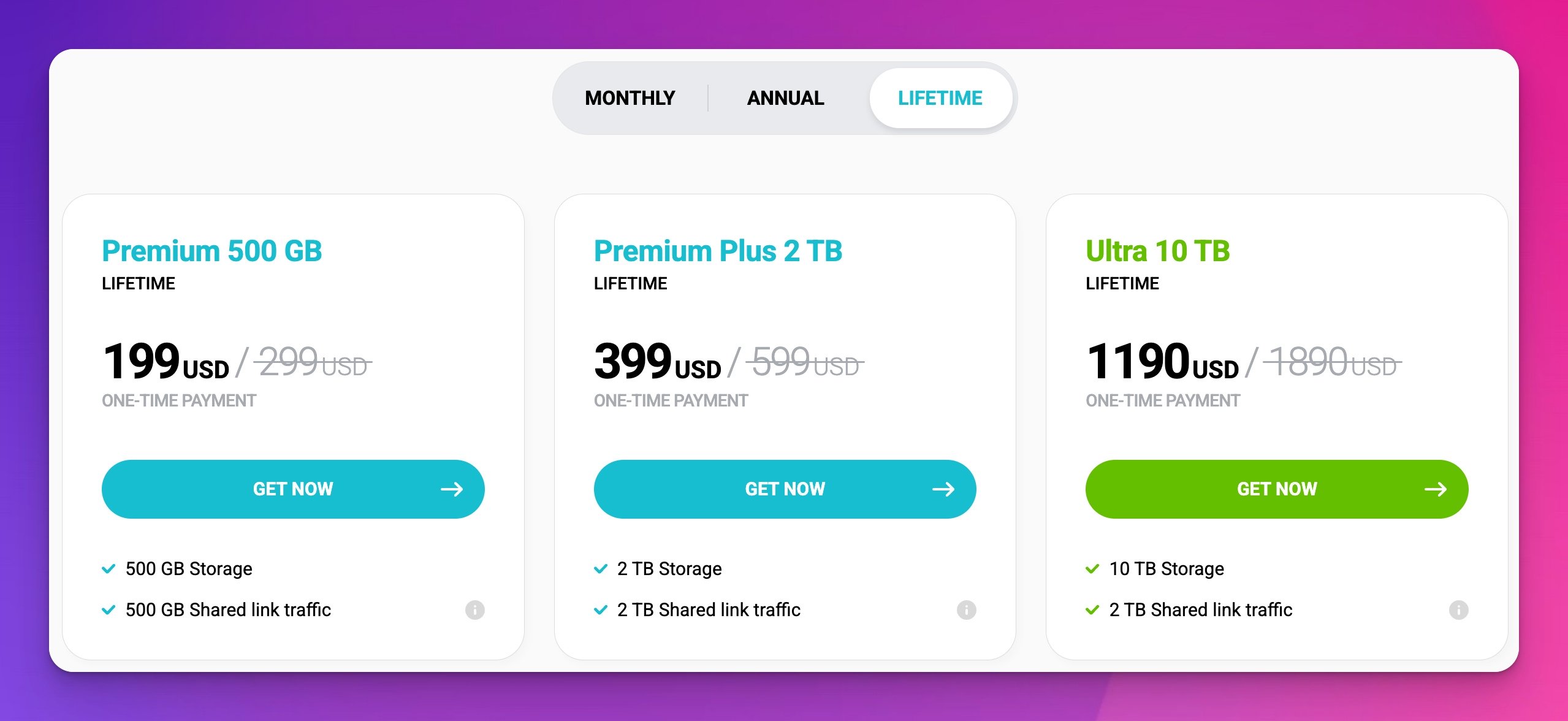Published: November 13, 2025 | Last updated: November 13, 2025
Key Takeaway: Black Friday 2025 deals are arriving early this year, with cybersecurity and hosting providers offering significant discounts starting now through early December. Small businesses can save 30-77% on essential security tools, VPN services, cloud storage, and managed hosting—including lifetime plans that eliminate recurring costs. These deals represent the best pricing of the year on premium services that protect your business data and infrastructure.
- Biggest Savings: NordVPN (77% off), Liquid Web (77% off VPS hosting), Proton VPN (75% off)
- Best Lifetime Deal: pCloud cloud storage (up to 62% off one-time payment)
- Top Business Security: Bitdefender Small Business (30% off), NordLayer (28% off with recurring commissions)
- Deal Period: Most deals live now through December 1-5, 2025
Black Friday has traditionally marked the start of the holiday shopping season, but in recent years, cybersecurity and software providers have begun launching deals weeks in advance. For small business owners planning technology investments for 2026, this early access provides an opportunity to secure premium security tools, VPN services, cloud storage, and hosting infrastructure at substantially reduced prices.
This year's early Black Friday deals are particularly compelling for businesses seeking to strengthen their cybersecurity posture or upgrade their hosting infrastructure. With remote work continuing to drive security concerns and data protection requirements becoming more stringent, investing in proper security and infrastructure tools has moved from optional to essential for most small businesses.
Why Early Black Friday Deals Matter for Small Businesses
The timing of early Black Friday deals allows businesses to make strategic technology decisions before year-end budget finalizations. Cybersecurity planning benefits from advanced preparation, and securing tools at discounted rates enables organizations to allocate saved budget to implementation and training rather than licensing costs.
Additionally, many of the deals featured in this guide offer lifetime plans or multi-year subscriptions at locked-in rates, protecting businesses from future price increases while providing immediate cost savings. For bootstrapped companies or those managing tight IT budgets, these deals can make enterprise-grade security and hosting accessible at prices comparable to consumer-level alternatives.
Endpoint Security & Business Antivirus
Bitdefender GravityZone Small Business Security (30% Off)
Bitdefender consistently ranks among the top endpoint protection platforms for small businesses, offering advanced threat detection and multi-layered ransomware protection that has earned independent testing certifications from AV-Test and AV-Comparatives. The GravityZone Small Business Security platform provides centralized management for up to 100 devices, making it an ideal choice for growing companies that need enterprise-grade protection without enterprise-level complexity.

What's Included:
- Real-time threat detection with behavioral analysis
- Multi-layer ransomware protection with automatic backup creation
- Web attack prevention and anti-phishing technology
- Centralized cloud console for device management
- Support for Windows, macOS, Android, and iOS
Current Deal: 30% off Small Business Security plans through December 2025
Who This Is For: Small businesses with 5-100 devices that need comprehensive endpoint protection with centralized management. Particularly valuable for companies in regulated industries or those handling sensitive customer data.
VPN & Zero-Trust Network Security
NordVPN (Up to 77% Off + 3 Months Free)
NordVPN launched its Black Friday promotion early this year, offering discounts of up to 77% on two-year plans across all subscription tiers. While NordVPN markets primarily to consumers, the service has become increasingly popular among small businesses and remote teams that need reliable, fast VPN protection without the complexity of enterprise solutions.

Plan Options & Pricing:
- Basic Plan: $2.99/month (save 74%) – VPN protection only
- Plus Plan: $3.89/month (save 74%) – Adds Threat Protection Pro and NordPass password manager
- Complete Plan: $4.89/month (save 73%) – Includes 1TB encrypted cloud storage via NordLocker
- Prime Plan: $6.89/month (save 77%) – Full suite including identity theft protection
Why It Works for Business: NordVPN provides access to 8,000+ servers across 126 countries with consistently high performance scores. The business use case typically involves securing remote employees' connections, protecting sensitive data transmission, and accessing geo-restricted business resources.
30-Day Money-Back Guarantee: Test the service risk-free with a full refund available within the first month.
NordLayer Business VPN (28% Off)
For organizations that specifically need business-focused VPN features, NordLayer offers a dedicated business alternative to NordVPN. The platform provides centralized team management, hardware token authentication options, and dedicated server resources that consumer VPN services don't offer.
Business-Specific Features:
- Centralized user management dashboard
- Single Sign-On (SSO) integration with Google Workspace and Microsoft 365
- Hardware token authentication support
- Dedicated IP addresses for team members
- Site-to-site VPN for connecting office locations
- Zero-trust network access (ZTNA) architecture

Current Deal: 28% off annual plans, with a 40% recurring commission structure, making this an excellent long-term value proposition.
Who This Is For: Businesses with distributed teams that need zero-trust security architecture and centralized access management. Particularly valuable for companies moving away from traditional VPN appliances toward cloud-native security.
Private Internet Access VPN (Black Friday Special)
Private Internet Access (PIA) has built its reputation on transparency and value, offering one of the most cost-effective VPN solutions without compromising security. The service maintains a verified no-logs policy that has been tested in court, providing documented proof of its privacy claims.
Why Consider PIA: For budget-conscious small businesses that need basic VPN protection for remote workers, PIA offers competitive speeds and strong encryption at lower price points than premium alternatives. The service supports unlimited simultaneous connections, making it particularly cost-effective for teams.

Current Deal: Black Friday pricing available now through early December with discounts of 30-100% depending on plan length.
Password Management & Authentication
NordPass Business (30% Off)
NordPass Business provides team-based password management with the security infrastructure you'd expect from the company behind NordVPN. The platform uses XChaCha20 encryption—the same standard recommended by cryptographers for long-term data protection—and follows zero-knowledge architecture principles where even NordPass cannot access stored passwords.
Team Management Features:
- Unlimited password storage with secure sharing
- XChaCha20 encryption and zero-knowledge architecture
- Data breach scanner with dark web monitoring
- Password health reports identifying weak or reused credentials
- Emergency access for business continuity
- Biometric authentication support (Touch ID, Face ID)
Current Deal: 30% off annual NordPass Business plans, bringing the cost down significantly for team deployments.

Integration Note: NordPass works particularly well when combined with NordVPN or NordLayer, creating a comprehensive security ecosystem from a single vendor.
Privacy-Focused Cloud Services
Proton Pass Professional (36% Off – Coming Soon)
Proton Pass represents the newest addition to Proton's privacy-focused product ecosystem, bringing the company's Swiss privacy protections and open-source transparency to password management. The Professional plan includes advanced features specifically designed for business use, though it requires a minimum of three users for business deployment.
Deal Status Update
The Proton Pass Professional Black Friday deal (36% off) is expected to launch in late November 2025. The current Proton Pass Plus personal plan is available now at 60% off ($1.99/month).
Proton Pass Features:
- End-to-end encrypted password management
- Unlimited Hide-My-Email aliases for privacy protection
- Integrated 2FA authenticator
- Secure note storage with document attachments
- Data breach monitoring and password health reports
- Swiss privacy law protection and open-source code
Why Proton Pass: Organizations prioritizing privacy—particularly those in regulated industries or serving European markets—benefit from Proton's Swiss jurisdiction and commitment to open-source transparency. The integration with other Proton services (VPN, email, storage) creates a comprehensive privacy ecosystem.
Proton VPN (75% Off)
Proton VPN distinguishes itself through Swiss privacy law protection, open-source code audited by third-party security researchers, and a documented no-logs policy that's been independently verified. The Black Friday deal makes the service's premium tier—which includes access to 15,800+ servers across 126 countries—available at one of the year's lowest prices.
Proton VPN Plus Features:
- Access to 15,800+ high-speed servers worldwide
- Secure Core architecture routing traffic through privacy-friendly countries
- NetShield ad and malware blocking
- VPN Accelerator technology for improved speeds
- Support for 10 simultaneous VPN connections
- Kill switch and split tunneling features
Current Deal: 2-year plan at $2.49/month (75% off), 1-year plan at $3.99/month (60% off)

30-Day Money-Back Guarantee: Test Proton VPN risk-free with a full refund available within 30 days.
Cloud Storage & Backup Solutions
pCloud Lifetime Cloud Storage (Up to 62% Off)
pCloud's lifetime plans represent one of the most compelling value propositions in cloud storage, eliminating recurring subscription costs through a single one-time payment. Based in Switzerland and operating under Swiss privacy laws, pCloud offers client-side encryption options that ensure even pCloud cannot access stored files.
Black Friday Lifetime Plans:
- 2TB Lifetime: Approximately $279 (was $850) – 67% savings
- 5TB Lifetime Bundle: $599 (includes encryption + password manager) – 62% off
- 10TB Lifetime: $890 (was significantly higher) – 58% savings
What's Included:
- One-time payment, lifetime access (no recurring fees)
- 30-day file version history for recovery
- Built-in media players for streaming content
- Client-side encryption option (pCloud Crypto)
- File sharing with password protection and expiration dates
- Desktop sync apps for Windows, macOS, and Linux
ROI Calculation: At $279 for 2TB of lifetime storage, pCloud breaks even with services charging $10/month after just 28 months—and you own the storage forever. For businesses planning long-term data backup strategies, this eliminates a recurring expense from your technology budget.

10-Day Money-Back Guarantee: Test the service and verify performance before the guarantee period expires.
Web Hosting & Infrastructure
Liquid Web Managed Hosting (Up to 77% Off VPS, 50% Off Managed Plans)
Liquid Web has built its reputation on “heroic support” and enterprise-grade infrastructure accessible to small and medium businesses. The company's managed hosting solutions handle server administration, security updates, and performance optimization, allowing businesses to focus on their applications rather than infrastructure management.
Black Friday Hosting Deals:
- Managed VPS Hosting: 85% off for 3 months on monthly plans, 75% off for 2-year plans (starting at $8.85/month)
- Managed Dedicated Servers: Up to 70% off for 3 months (starting at $39.50/month)
- Cloud VPS Hosting: Plans starting at $5/month with Black Friday discounts
- Managed WordPress Hosting: Up to 50% off managed WordPress plans
What Makes Liquid Web Different:
- 100% uptime guarantee with 10x credit for any downtime
- Fully managed services, including security updates and monitoring
- 24/7/365 “heroic support” with 30-second phone response guarantee
- ServerSecure advanced security suite included
- Automatic backups and disaster recovery options
- Choice of data center locations for compliance requirements
Who This Is For: Businesses running high-traffic websites, e-commerce platforms, or business-critical applications that need reliable hosting with expert support. Particularly valuable for companies lacking in-house server administration expertise.

30-Day Money-Back Guarantee: Test Liquid Web's managed hosting with full refund protection.
Strategic Buying Guide: How to Evaluate Black Friday Deals
Not every deal represents genuine value, and purchasing software or services based solely on discount percentages can lead to buyer's remorse or unused subscriptions. Before committing to any Black Friday purchase, consider these evaluation criteria:
Assess Actual Business Need
The best deal becomes a poor investment if the service doesn't address an actual business requirement. Evaluate whether the tool solves an existing problem, fills a documented security gap, or supports a planned initiative. Avoid impulse purchases driven purely by discount percentages.
Calculate Total Cost of Ownership
Look beyond the initial discount to understand long-term costs. Many deals offer deep discounts for the first term but renew at standard rates. Calculate the total cost over your expected usage period, including renewal pricing, to determine true value.
Consider Implementation Requirements
Security tools and hosting migrations require time, expertise, and, in some cases, consulting costs to implement properly. Factor in these implementation costs when evaluating whether a deal makes financial sense for your organization.
Verify Compatibility with Existing Systems
Before purchasing, confirm that new tools integrate with your existing technology stack. Check for SSO integration, API availability, and compatibility with your current platforms to avoid creating isolated security silos.
Review Vendor Lock-In Implications
Lifetime plans and multi-year subscriptions create long-term commitments. Ensure the vendor has a stable track record, reliable customer support, and clear data export capabilities in case you need to migrate to alternative solutions.
Creating a Cohesive Security Stack
Rather than purchasing tools in isolation, consider how these Black Friday deals can combine to create a comprehensive security infrastructure. An effective small business security stack typically includes:
Recommended Security Stack Components:
- Endpoint Protection: Bitdefender Small Business for device-level security
- Network Security: NordLayer or NordVPN for encrypted connections
- Authentication: NordPass or Proton Pass for password management
- Data Protection: pCloud lifetime storage for backup and file sharing
- Infrastructure: Liquid Web managed hosting for web applications
This combination addresses multiple security layers—devices, networks, credentials, data, and infrastructure—providing defense-in-depth protection that aligns with NIST Cybersecurity Framework principles.
Deal Timeline and Purchase Strategy
Most of these early Black Friday deals will remain active through December 1-5, 2025, though some providers may adjust pricing or availability as actual Black Friday approaches. Here's a strategic approach to maximizing these opportunities:
November 13-20: Research and Testing Phase
Take advantage of money-back guarantees to test services before committing to long-term plans. Most vendors offer 10-30 day trial periods that let you verify performance, compatibility, and suitability for your specific requirements.
November 21-27: Strategic Purchases
If testing confirms a service meets your needs, make purchases before Black Friday when deals are already active and inventory is guaranteed. Some popular plans—particularly limited lifetime storage offerings—can sell out during peak demand.
November 28 – December 1: Black Friday Weekend
Monitor for enhanced deals or limited-time bonuses that some vendors add during peak Black Friday shopping. However, most providers maintain consistent pricing throughout the promotional period.
December 2-5: Final Opportunity
Last chance to capture Black Friday pricing before deals expire. Some vendors extend through Cyber Monday and the following week, but don't assume all deals will remain available past December 5.
Frequently Asked Questions
Can I upgrade my existing subscription to take advantage of Black Friday pricing?
Most Black Friday deals apply exclusively to new customer accounts rather than existing subscriptions. However, some vendors allow existing customers to add new services or purchase additional licenses at promotional rates. Contact vendor support directly to inquire about upgrade options for current customers.
What happens when my discounted term expires?
Subscriptions purchased at Black Friday discounts typically renew at standard pricing unless you've purchased a lifetime plan. The initial promotional rate applies only to the first billing cycle or specified term length. Review renewal pricing before purchasing to understand long-term costs.
Are lifetime plans truly lifetime, or do they have hidden limitations?
Reputable vendors like pCloud offer lifetime plans with no expiration dates or renewal requirements. However, these plans remain subject to acceptable use policies, and vendors reserve the right to modify features or pricing for future customers while maintaining the original terms for existing customers. Always review the vendor's lifetime plan terms before purchasing.
Can I purchase now but activate the service later?
Most subscriptions begin immediately upon purchase, starting your term. If you plan to deploy a service in Q1 2026, consider whether starting your subscription now makes sense or if waiting until closer to your implementation date would be more strategic. Some vendors offer grace periods or delayed activation, but this varies by provider.
What if I purchase a service and later find it doesn't meet my needs?
Nearly all the vendors featured in this guide offer money-back guarantees ranging from 10 to 30 days. This provides a trial period to test the service thoroughly before the guarantee expires. Document your testing process and evaluation criteria to make an informed decision within the refund window.
Should I buy individual services or bundled suites?
This depends on your specific requirements and existing technology stack. Bundled suites (such as NordVPN's Complete plan or Proton Unlimited) offer savings if you need multiple services from the same vendor. However, best-of-breed individual solutions may provide superior features for specific use cases. Evaluate based on your actual needs rather than purchasing features you won't use.
Do these deals apply to business accounts or only personal use?
The deals featured in this guide include both business-specific plans (Bitdefender Small Business, NordLayer, NordPass Business, Liquid Web hosting) and services that work for business use despite consumer marketing (NordVPN, Proton VPN, pCloud). Review each vendor's terms of service to confirm business use is permitted under their licensing agreement.
How do I ensure I'm getting the genuine Black Friday deal and not a standard promotion?
Use the affiliate links provided in this article, which connect directly to verified promotional landing pages. Alternatively, visit the vendor's website directly and look for Black Friday banners or promotional pages. Discount codes should auto-apply at checkout when accessing through promotional links.
Implementation Support and Professional Services
While these Black Friday deals provide significant cost savings on software and services, successful implementation often requires planning and expertise beyond what internal teams can provide. For Miami-area businesses or organizations seeking professional guidance on security implementation, UniFi network deployments, or technology infrastructure planning, iFeelTech offers consultation services that help maximize your technology investments.
We've deployed security solutions for 100+ small and medium businesses across South Florida, with particular expertise in UniFi networking infrastructure, business cybersecurity frameworks, and technology stack optimization. Our approach focuses on practical implementation that balances security requirements with usability and budget constraints.
Summary and Next Steps
Early Black Friday 2025 deals present genuine opportunities for small businesses to upgrade security infrastructure, implement reliable VPN protection, secure cloud storage, and improve hosting performance at substantially reduced costs. The key to maximizing these opportunities lies in strategic evaluation rather than impulse purchasing.
Prioritize deals that address documented business needs, calculate total ownership costs including renewal pricing, and take advantage of money-back guarantees to test services before committing to long-term plans. For businesses building comprehensive security stacks, consider how multiple services integrate to create defense-in-depth protection rather than purchasing tools in isolation.
The deals outlined in this guide represent verified promotions from established vendors with strong track records in the cybersecurity and hosting industries. Most remain active through early December 2025, providing ample time for evaluation and strategic decision-making before year-end budget planning concludes.
Recommended Action Items:
- Evaluate your current security infrastructure against the NIST Cybersecurity Framework to identify gaps
- Review your 2026 technology budget to determine available funding for security improvements
- Test services using money-back guarantees before committing to long-term subscriptions
- Calculate the total cost of ownership, including renewal rates, to understandthe true investment
- Consider professional implementation support to maximize ROI on security tool deployments
For additional guidance on selecting and implementing business cybersecurity tools, review our comprehensive small business cybersecurity software guide or security assessment framework to understand how these tools fit within broader security strategies.

